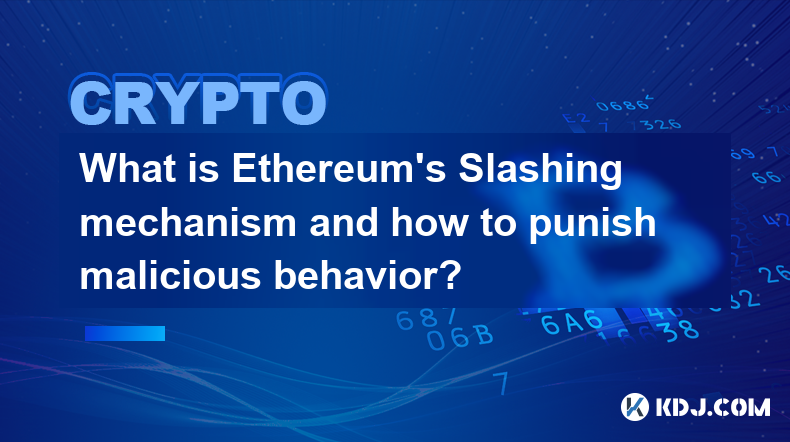-
 Bitcoin
Bitcoin $96,161.2493
-2.14% -
 Ethereum
Ethereum $2,686.5756
-2.45% -
 XRP
XRP $2.5719
-3.67% -
 Tether USDt
Tether USDt $0.9999
-0.04% -
 BNB
BNB $655.8976
-0.15% -
 Solana
Solana $171.9849
-2.65% -
 USDC
USDC $1.0001
0.00% -
 Dogecoin
Dogecoin $0.2435
-4.35% -
 Cardano
Cardano $0.7615
-4.97% -
 TRON
TRON $0.2379
-4.28% -
 Chainlink
Chainlink $17.4447
-5.17% -
 Avalanche
Avalanche $24.9624
-1.92% -
 Sui
Sui $3.3374
-3.85% -
 Stellar
Stellar $0.3266
-3.96% -
 Litecoin
Litecoin $127.2255
-5.17% -
 Toncoin
Toncoin $3.6609
1.73% -
 Shiba Inu
Shiba Inu $0.0...01526
-2.42% -
 UNUS SED LEO
UNUS SED LEO $9.7275
-0.32% -
 Hedera
Hedera $0.2145
-3.18% -
 Hyperliquid
Hyperliquid $24.2706
-2.62% -
 Polkadot
Polkadot $5.0883
0.29% -
 MANTRA
MANTRA $7.6370
0.37% -
 Bitcoin Cash
Bitcoin Cash $317.1514
-3.50% -
 Bitget Token
Bitget Token $5.0005
7.55% -
 Ethena USDe
Ethena USDe $0.9987
-0.10% -
 Dai
Dai $1.0000
-0.01% -
 Uniswap
Uniswap $8.8025
-5.45% -
 Monero
Monero $233.1225
-0.50% -
 NEAR Protocol
NEAR Protocol $3.4727
-2.15% -
 Pepe
Pepe $0.0...09302
-4.88%
How does Ethereum’s PoS (Proof of Stake) mechanism replace PoW?
Ethereum's Proof of Stake (PoS) system introduces a shift from energy-intensive miners to validators who stake ETH to ensure blockchain security and facilitate transaction verification.
Feb 19, 2025 at 04:48 pm

Key Points
- Ethereum's transition from PoW to PoS involves several key changes, including a shift from miners to validators, reduced energy consumption, and increased network security.
- The PoS mechanism rewards validators for holding and staking ETH, ensuring the integrity of the blockchain and facilitating transaction verification.
- Staking requirements and validator selection processes vary depending on the specific PoS implementation.
- Ethereum's PoS transition aims to address scalability, security, and sustainability concerns associated with the PoW mechanism.
How Ethereum's PoS Mechanism Replaces PoW
Ethereum's transition from Proof of Work (PoW) to Proof of Stake (PoS) is a significant event in the cryptocurrency landscape, introducing fundamental changes to the blockchain's operating mechanism.
- Shift from Miners to Validators: Unlike PoW, which relies on miners to validate transactions through computational power, PoS utilizes validators. Validators are responsible for verifying new blocks, ensuring the integrity and security of the blockchain.
- Reduced Energy Consumption: PoW mechanisms require significant computational power, resulting in substantial energy consumption. PoS, on the other hand, is significantly more energy-efficient as it does not require energy-intensive mining operations.
- Increased Network Security: In PoS, validators are incentivized to engage in honest behavior through the requirement to stake a certain amount of ETH. This reduces the likelihood of malicious activities and enhances the overall security of the blockchain.
Block Creation and Verification: Validators are chosen randomly to propose and add new blocks to the blockchain. Once a block is proposed, other validators have 12 seconds to attest to its validity.
- A sufficient number of attestations must be received for a block to be finalized.
- Validators are penalized if they make false attestations or fail to participate actively in the validation process.
- The proposer of a block receives a block reward for their contribution to the network.
Validator Selection and Staking: Validators are selected based on the amount of ETH they stake. The more ETH a validator stakes, the higher their chances are to be chosen to propose and validate new blocks and receive rewards.
- Minimum staking requirements may vary depending on the specific PoS implementation.
- Validators can join staking pools to increase their chances of being selected and participating in the validation process.
Sustainability and Scalability: The transition to PoS is driven by concerns regarding the sustainability of PoW and the need for improved scalability.
- PoS eliminates the energy-intensive mining process, reducing Ethereum's environmental footprint.
- With reduced validation time and energy requirements, PoS enhances the throughput and scalability of the blockchain, enabling it to handle more transactions efficiently.
FAQs
What are the benefits of PoS over PoW?
- Reduced energy consumption
- Increased security
- Improved scalability
- Sustainability
What are the risks associated with PoS?
- Possible cartelization among validators with large stakes
- Potential for censorship if a small group of validators control a majority of the stake
- Vulnerability to slashing attacks, where validators can lose their staked ETH for malicious behavior
What is the role of validators in PoS?
- Proposing new blocks
- Validating and attesting to the validity of blocks
- Safeguarding the security and integrity of the blockchain
What is the difference between a full validator and a staking pool?
- A full validator operates a node and directly participates in the validation process, staking their own funds.
- A staking pool allows users to combine their funds and delegate it to one or more validators, earning rewards proportional to their stake.
What are the staking rewards in PoS?
- Block rewards for proposing and finalizing new blocks
- Transaction fees included in the blocks
- Rewards may vary depending on the platform and the amount of ETH staked.
Disclaimer:info@kdj.com
The information provided is not trading advice. kdj.com does not assume any responsibility for any investments made based on the information provided in this article. Cryptocurrencies are highly volatile and it is highly recommended that you invest with caution after thorough research!
If you believe that the content used on this website infringes your copyright, please contact us immediately (info@kdj.com) and we will delete it promptly.
- Tether Launches TradeFi, a Blockchain-Based Financial Service Aimed at Optimizing International Trade
- 2025-02-22 17:00:25
- Altcoin Season Has Begun, Proclaims CryptoQuant CEO Ki Young Ju
- 2025-02-22 17:00:25
- Bybit Hack: Crypto Exchange Loses $1.4B in ETH, Market Cap Drops 1.86% to $3.17 Trillion
- 2025-02-22 17:00:25
- Ethereum (ETH), FTX Token (FTT), Coinbase, stETH, and Blur (BLUR) Are the Top 5 Most Attention-Grabbing Cryptocurrency-Related Keywords
- 2025-02-22 17:00:25
- Bybit Hack: Exchange Loses Over $1.1 Billion in Ethereum in One of the Biggest Security Breaches Ever
- 2025-02-22 17:00:25
- How to Build a Crypto Price Alert System Using CoinGecko and Python
- 2025-02-22 17:00:25
Related knowledge

What is Ethereum’s Slashing mechanism and how to punish malicious behavior?
Feb 20,2025 at 03:08am
Key PointsOverview of slashingDifferent types of slashing in EthereumIncentives and consequences of slashingIdentifying and reporting slashed validatorsOngoing discussions and potential improvementsEthereum's Slashing Mechanism: Punishing Malicious BehaviorEthereum's slashing mechanism is an essential tool for ensuring network security and punishing mal...

What is the verifier node of Ethereum and how to become a verifier?
Feb 19,2025 at 06:00pm
The Verifier Node of Ethereum: A Comprehensive GuideKey Points:What is a Verifier Node?How to Become a Verifier NodeResponsibilities and Rewards of a Verifier NodeMinimum Requirements for Becoming a Verifier NodePotential Difficulties in Running a Verifier Node1. What is a Verifier Node?A Verifier Node is an independent entity on the Ethereum network th...

What is Ethereum’s staking, and how to participate and earn money?
Feb 19,2025 at 04:37pm
Key Points:Understanding Ethereum's Staking MechanismSteps to Participate in StakingBenefits and Rewards of StakingSecurity and Risk ConsiderationsTechnical Requirements and Hardware OptionsPotential Challenges and Troubleshooting TipsFAQs on Ethereum StakingWhat is Ethereum's Staking?Proof-of-Stake (PoS) is a consensus mechanism used in blockchain netw...

What is Ethereum’s DAO (Decentralized Autonomous Organization) and how does it work?
Feb 20,2025 at 03:12am
Key PointsDefinition and Structure of a DAOGovernance and Decision-Making in DAOsBenefits and Use Cases of DAOsChallenges and Limitations of DAOsWhat is Ethereum's DAO (Decentralized Autonomous Organization) and How Does It Work?Definition and Structure of a DAOA Decentralized Autonomous Organization (DAO) is an innovative governance and management fram...

What is Ethereum's multi-signature wallet and how to improve security?
Feb 20,2025 at 02:18pm
Key Points:Understanding the Concept of a Multi-Signature WalletBenefits and Drawbacks of Multisig WalletsRequirements for Setting Up a Multisig WalletStep-by-Step Guide to Generating a Multisig WalletImplementing Strategies for Enhanced Security1. Understanding the Concept of a Multi-Signature WalletA multi-signature (multisig) wallet in the Ethereum e...

What is Ethereum's oracle and how to provide data for smart contracts?
Feb 21,2025 at 01:30am
Key Points:Understanding the concept of oracles in EthereumExploring different types of oraclesDetailed guide on how to provide data for smart contractsAddressing potential challenges and considerationsWhat is Ethereum's Oracle?Oracles are crucial components in the Ethereum ecosystem, enabling smart contracts to access real-world data and off-chain even...

What is Ethereum’s Slashing mechanism and how to punish malicious behavior?
Feb 20,2025 at 03:08am
Key PointsOverview of slashingDifferent types of slashing in EthereumIncentives and consequences of slashingIdentifying and reporting slashed validatorsOngoing discussions and potential improvementsEthereum's Slashing Mechanism: Punishing Malicious BehaviorEthereum's slashing mechanism is an essential tool for ensuring network security and punishing mal...

What is the verifier node of Ethereum and how to become a verifier?
Feb 19,2025 at 06:00pm
The Verifier Node of Ethereum: A Comprehensive GuideKey Points:What is a Verifier Node?How to Become a Verifier NodeResponsibilities and Rewards of a Verifier NodeMinimum Requirements for Becoming a Verifier NodePotential Difficulties in Running a Verifier Node1. What is a Verifier Node?A Verifier Node is an independent entity on the Ethereum network th...

What is Ethereum’s staking, and how to participate and earn money?
Feb 19,2025 at 04:37pm
Key Points:Understanding Ethereum's Staking MechanismSteps to Participate in StakingBenefits and Rewards of StakingSecurity and Risk ConsiderationsTechnical Requirements and Hardware OptionsPotential Challenges and Troubleshooting TipsFAQs on Ethereum StakingWhat is Ethereum's Staking?Proof-of-Stake (PoS) is a consensus mechanism used in blockchain netw...

What is Ethereum’s DAO (Decentralized Autonomous Organization) and how does it work?
Feb 20,2025 at 03:12am
Key PointsDefinition and Structure of a DAOGovernance and Decision-Making in DAOsBenefits and Use Cases of DAOsChallenges and Limitations of DAOsWhat is Ethereum's DAO (Decentralized Autonomous Organization) and How Does It Work?Definition and Structure of a DAOA Decentralized Autonomous Organization (DAO) is an innovative governance and management fram...

What is Ethereum's multi-signature wallet and how to improve security?
Feb 20,2025 at 02:18pm
Key Points:Understanding the Concept of a Multi-Signature WalletBenefits and Drawbacks of Multisig WalletsRequirements for Setting Up a Multisig WalletStep-by-Step Guide to Generating a Multisig WalletImplementing Strategies for Enhanced Security1. Understanding the Concept of a Multi-Signature WalletA multi-signature (multisig) wallet in the Ethereum e...

What is Ethereum's oracle and how to provide data for smart contracts?
Feb 21,2025 at 01:30am
Key Points:Understanding the concept of oracles in EthereumExploring different types of oraclesDetailed guide on how to provide data for smart contractsAddressing potential challenges and considerationsWhat is Ethereum's Oracle?Oracles are crucial components in the Ethereum ecosystem, enabling smart contracts to access real-world data and off-chain even...
See all articles

















![BONK The Meme Coin MORE THAN ORDINARY [DOG] on Solana BONK The Meme Coin MORE THAN ORDINARY [DOG] on Solana](/uploads/2025/02/22/cryptocurrencies-news/videos/bonk-meme-coin-ordinary-dog-solana/image-1.jpg)


































































